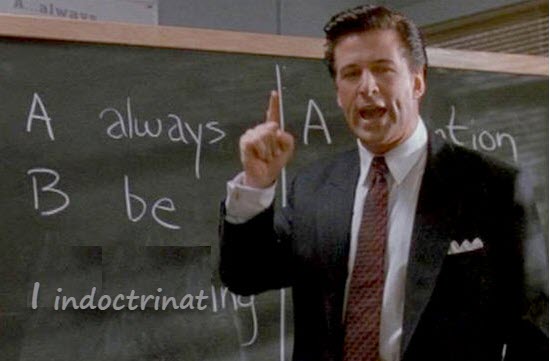If you’re anything like me, you were utterly fascinated by the broom-balancing boondoggle that swept the internet earlier this week.
(Forgive the pun.)
You probably saw pictures and videos from astonished people who wanted to test out the claim that the earth was tilted “perfectly” on February 10th.
If you hadn’t heard about this, do a quick search and you’ll find a ton of posts and articles. Apparently the hashtag #broomstickchallenge even trended.
Only problem is, the whole thing was a hoax (which you’ll also see tons of posts and articles about).

Did your B.S. meter pick up on the hoax or did you know better because of the depth of your scientific knowledge?
I’ll admit, I was only 90% sure the whole thing was Oscar Meyer-level bologna.
So… let’s turn this into a teachable moment. Because anytime something gets this kind of viral attention (and action), there are lessons you can learn.
I see 3 major persuasion principles at play. Let’s discuss.
When “Proof” Arm Wrestles Common Sense
One of the factors that powered the broomstick ballyhoo was the claim that NASA made the announcement.
As you know, our brains instinctively defer to authority figures… at least when it comes to topics we aren’t experts in.
NASA is a pretty reputable authority. And most of us aren’t experts on the earth’s rotational tilt or the effect it has on gravitation.
Interestingly, it would have been incredibly easy to find out if NASA was behind this announcement. And I think most people knew they could verify the story. That’s what made it so easy for them to trust without looking any deeper.
Secondarily, social proof — once it picked up steam — may have been even more convincing than the NASA angle.
Because of a cognitive bias called the “availability cascade,” we have the natural tendency to believe almost anything we’ve seen or heard enough times.
It’s hard to go against the crowd… and it’s less work to trust what everyone else is saying.
So the lessons are that:
- It pays to become known as an authority or expert in an area other people are not.
- Leverage social proof whenever you can — and when there’s visible, growing support for/acceptance of a proposition, see if there’s a way to use that momentum to gain traction for your own idea/offer.
Seeing is Believing… When You’re Told What You’re Looking At
Think about this…
The #broomstickchallenge starts with the little-known and unlikely-seeming fact that brooms can stand upright.
The argument goes like this: “Hey today’s the only day in this decade that the earth is perfectly tilted. Lemme prove it. Go grab your broom.”
So the hoax tells you how to “prove” the claim for yourself… by pointing you to THE ONE THING that seems to prove it. (I guess you could have used an egg, too. But there’s more work involved.)
This is similar to the way magicians direct your attention toward a specific object or action so you don’t notice the mechanics that make the trick work.
You must point to the broom specifically or the argument falls apart.
If the earth is perfectly tilted, shouldn’t you be able to make a sharpened pencil stand upright on its tip, too?
There’s a lesson here, too. You can “educate” your potential buyers to and almost define their buying criteria for them.
Point them to something that you know they’ll see. When they see it, they’re more likely to believe everything else you said… and do what you recommended they do. Just like a magic trick. (More on that concept here.)
Or, simply show your should-be buyer what you want him to see. Demonstration can be very convincing.
Take It Easy, Man
The perfect tilt of the earth, if it were true, could have been demonstrated in any number of ways. But the craze wouldn’t have caught on if “proving” it wasn’t a low-risk, easy thing to do.
The #HandstandOnTheRoofChallenge probably never would have gone viral.
When you’re selling a product, service or idea, you must be mindful of risk and perceived risk.
That’s just as much about your offer as it is about the copy.
In your copy, assure him of his high probability of success. Give him simple information he can use to justify his purchase to anyone who may ask him about it. Remind him this product was designed specifically for people like him — and the people who buy it are the admired by peers, live longer, etc.
(As long as those things are true.)
Your offer can reduce risk by including a strong guarantee. Make it easy to cancel or request a refund.
Balancing a broom is easy and no one gets hurt doing it.
Try to make it that easy to buy from you.
P.S. Did you know that versions of the #broomstickchallenge have been around since at least 1975?
There’s another lesson: when you find something that works, double down on it.
The marketing method that works better than any other in ROI terms — one that you should definitely double down on — is email. The Make Email Great Again summit officially goes live on Monday, February 17th.
If you haven’t done it already, I encourage you to sign up here to learn secrets and strategies from some of the world’s best email marketers (myself included).



